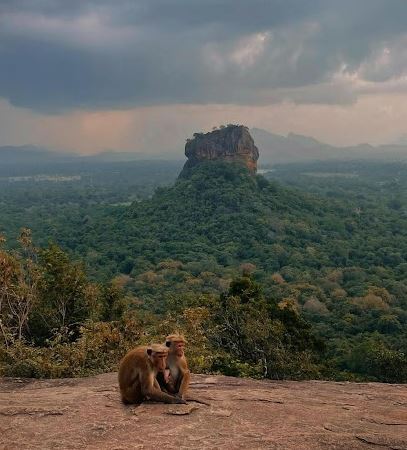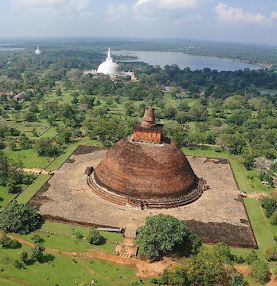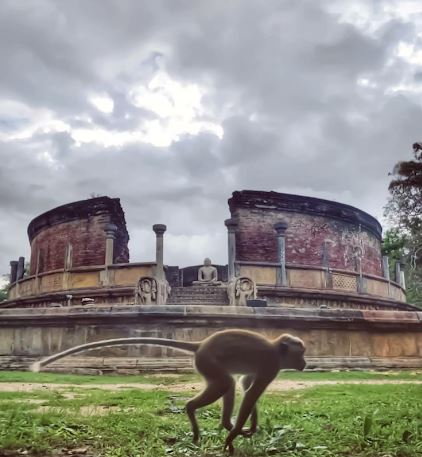


The Cultural Triangle Sri Lanka is a region in the central part of the island that is rich in ancient history, archaeological sites, and cultural heritage. It forms a triangular area connecting the cities of Anuradhapura, Polonnaruwa, and Kandy, with many other significant sites within this zone. The Cultural Triangle Sri Lanka is often considered the heart of Sri Lanka’s historical and cultural identity, showcasing the island’s ancient civilization, religious significance, and architectural marvels.
More Details – Anuradhapura, Polonnaruwa, Kandy
Anuradhapura
- Historical Significance: Anuradhapura is one of the oldest continuously inhabited cities in the world and served as the capital of Sri Lanka for over 1,300 years, from the 4th century BCE to the 11th century CE. It was a major center of Theravada Buddhism and a hub for religious and cultural activities.
- Key Attractions:
- Ruwanwelisaya: A massive stupa built by King Dutugemunu, one of the most venerated Buddhist monuments in Sri Lanka.
- Sri Maha Bodhi: The sacred Bodhi tree, grown from a cutting of the original tree under which Buddha attained enlightenment. It is the oldest living human-planted tree with a known planting date (circa 288 BCE).
- Jetavanaramaya: One of the tallest stupas in the ancient world, built by King Mahasena.
- Isurumuniya Temple: Famous for its rock carvings, including the famous “Lovers” sculpture.
Polonnaruwa
- Historical Significance: Polonnaruwa became the capital after the decline of Anuradhapura, flourishing during the 11th and 12th centuries under the reign of King Parakramabahu I. The city is known for its well-preserved ruins that illustrate the architectural and engineering prowess of the time.
- Key Attractions:
- Gal Vihara: A rock temple famous for its large statues of Buddha carved out of a single granite rock, including a reclining Buddha and a standing figure.
- Parakrama Samudraya: A massive reservoir built by King Parakramabahu I, symbolizing his belief that “not one drop of water should flow into the ocean without benefiting mankind.”
- Royal Palace and Audience Hall: The ruins of the royal palace and council chamber, showcasing the grandeur of the ancient kingdom.
- Rankot Vihara: The largest stupa in Polonnaruwa, reflecting the influence of the earlier stupas in Anuradhapura.
Kandy
- Historical Significance: Kandy was the last capital of the Sinhala kings and remains a major cultural and religious center in Sri Lanka. It is home to the Temple of the Sacred Tooth Relic, one of the most important Buddhist relics in the world.
- Key Attractions:
- Temple of the Sacred Tooth Relic (Sri Dalada Maligawa): The temple houses the sacred tooth relic of Buddha, making it a significant pilgrimage site for Buddhists. The annual Esala Perahera, a grand procession held in Kandy, is centered around this relic.
- Kandy Lake: A serene body of water located in the heart of the city, constructed by the last king of Kandy, Sri Wickrama Rajasinghe.
- Royal Palace of Kandy: The residence of the last Sinhalese monarchy, now part of the Temple of the Tooth complex.
- Peradeniya Botanical Gardens: Located just outside Kandy, these gardens are known for their extensive collection of orchids and tropical plants.
Sigiriya
- Historical Significance: Sigiriya, also known as Lion Rock, is a UNESCO World Heritage site and one of Sri Lanka’s most iconic landmarks. It was built by King Kashyapa in the 5th century CE as a fortress and palace complex, famous for its stunning frescoes and advanced water gardens.
- Key Attractions:
- Lion’s Paw: The entrance to the palace is marked by a giant pair of lion’s paws, remnants of a colossal lion statue that once guarded the entrance.
- Frescoes: The Sigiriya frescoes, depicting celestial maidens, are one of the few surviving examples of ancient Sri Lankan painting.
- Mirror Wall: A highly polished wall where visitors from centuries past inscribed verses and poems, offering insights into the early visitors to Sigiriya.
- Water Gardens: A sophisticated series of gardens with pools, fountains, and terraces, showcasing the advanced engineering skills of the time.
Dambulla
- Historical Significance: Dambulla is home to the largest and best-preserved cave temple complex in Sri Lanka, known as the Dambulla Cave Temple or the Golden Temple of Dambulla. The temple complex dates back to the 1st century BCE and contains numerous statues and paintings related to Buddha and his life.
- Key Attractions:
- Dambulla Cave Temple: The complex comprises five caves with over 150 statues of Buddha, kings, and deities, along with intricate murals that cover the ceilings and walls.
- Golden Temple: A modern addition to the site, featuring a large golden Buddha statue, serving as the entrance to the cave complex.
- Cave Paintings: The cave walls and ceilings are adorned with murals that depict scenes from Buddha’s life and other significant religious events.
Private Day Tour Itinerary
- 6:00 am: pick up from any hotel in Habarana/Sigiriya and drive to the any of Cultural Triangle Sri Lanka
- 7.30 am: Visit any of Anuradhapura/ Polonnaruwa/ Sigiriya & Dambulla Cultural Triangle Sri Lanka Sites
- 5:00 pm: arrive at the Habarana/Sigiriya
- 5:30 pm drop off at your hotel in Habarana/Sigiriya
NOTE: Time may be change depend on traffic and weather conditions.
Day Tour Price
- Transport Cost for Cultural Triangle Sri Lanka : USD 95 per private tour in an A/C car or van with an English speaking chauffeur-guide
Vehicle Options:
Car (up to 2 persons): Toyota Axio, Prius Hybrid, Premio/Honda Fit Shuttle or similar
Van (3 to 6 persons): Toyota KDH/Nissan Caravan or similar
- Entrance ticket fee for Cultural Triangle Sri Lanka Sites (Anuradhapura/Polonnaruwa/Sigiriya) – One Site: US$ 35 / EUR 31 / GBP 26) per foreign adult and US$ 17 / EUR 16 / GBP 13 ticket price per foreign child of age 05 – 12 years are applicable.
